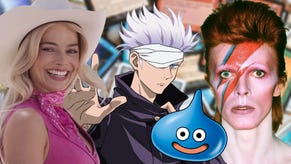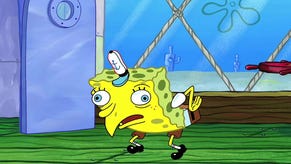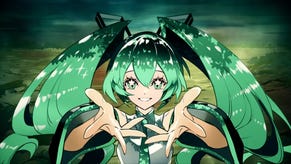Magic: The Gathering maker backpedals on AI use in promotional art: “Well, we made a mistake earlier”
Wizards of the Coast’s deleted posts were adamant the company’s promotional images were human-created.
Wizards of the Coast can’t manage to survive January without courting disaster. One year to the day after the OGL controversy began, the company responsible for both Dungeons & Dragons and Magic: The Gathering has bungled a case of AI-generated art in a series of advertising images posted online over the weekend.
In several now-deleted posts to X.com on January 4th, Wizards of the Coast promoted reprints of popular land cards in a retro style frame with quotes such as “It's positively shocking how good these lands look in retro frame." The backgrounds evoked 1800s laboratories, a la Mary Shelly’s Frankenstein or more reserved steampunk fiction. Another showing off popular reprints from the plane of Ravnica opted for an academic tower in a sprawling high fantasy city.
Discerning online sleuths immediately pinpointed several details in the backgrounds of these posts that seemed distorted, warped or garbled, tipping them off to some AI-generated shenanigans. The volume of complaints and criticisms reached a point that Wizards of the Coast stepped in to provide a comment: “We understand confusion by fans given the style being different than card art, but we stand by our previous statement," a now-deleted post read. "This art was created by humans and not AI."
Despite the staunch denial, individuals continued to point out discrepancies such as a steam gauge whose numbers devolve into nonsense, a rat’s nest of wires with no clear path and details that inexplicably fade out of existence. For two days the accusations continued, increasing in fervor and bafflement as Wizards of the Coast remained eerily silent on the issue. On January 6th, prolific illustrator and webcomic artist Dave Rapoza announced that he would no longer work with Magic: The Gathering.
“And just like that, poof, I’m done working for Wizards of the Coast - you can’t say you stand against this then blatantly use AI to promote your products, emails sent, good bye you all!” Rapoza tweeted on January 6th. “If you’re gonna stand for something you better make sure you’re actually paying attention, don’t be lazy, don’t lie.”
Rapoza’s comments reference Wizards of the Coast’s own supposed stance against the use of AI in their products, published to the MTG mothership on December 19th and explicitly saying the company “[requires] artists, writers, and creatives contributing to the Magic TCG to refrain from using AI generative tools to create final Magic products.”
Wizards finally responded on January 7th and - to the surprise of many - admitted that the images had, in fact, contained plenty of AI-generated elements: “Well, we made a mistake earlier when we said that a marketing image we posted was not created using AI. As you, our diligent community pointed out, it looks like some AI components that are now popping up in industry standard tools like Photoshop crept into our marketing creative, even if a human did the work to create the overall image,” a series of posts reads.
“While the art came from a vendor, it’s on us to make sure that we are living up to our promise to support the amazing human ingenuity that makes Magic great. We already made clear that we require artists, writers, and creatives contributing to the Magic TCG to refrain from using AI generative tools to create final Magic products. Now we’re evaluating how we work with vendors on creative beyond our products – like these marketing images – to make sure that we are living up to those values,” Wizards continued.
The statement was not the apology players and fans were expecting, nor is it much of a surprise from a company that spent the latter half of 2023 cleaning up AI-generated messes. Several illustrations submitted to D&D sourcebook Bigby Presents: Glory of the Giants were created primarily by generative AI tools. A separate ad campaign for the Lara Croft Secret Lair crossover with MTG contained allegedly obvious AI generated art and was quietly deleted when the internet took notice.
As Luke Plunkett pointed out over on Aftermath, the recent Hasbro layoffs that ripped through Wizards of the Coast last December and left 1,100 folks without jobs disproportionately affected art departments, communication and other soft skills. Dicebreaker has reached out to Wizards of the Coast for clarification, but it certainly seems as though the company’s art teams and comms people could have helped them avoid this mess if they weren’t, you know, facing unemployment over the holiday season.
Magic: The Gathering has long relied on commissioned art to fill the top half of their trading card game pieces, and bad actors were largely held at bay under threat of losing one of the most steady and illustrious professional relationships in the tabletop industry. Now, AI art generation is squeezing an already precarious field to its breaking point as executives cut costs (read: paid human labor), allowing unscrupulous content mills to gobble up what little work exists.
Rapoza clarified that Wizards of the Coast’s “goof ball shit” - decrying the use of AI in art creation while accepting doctored vendor work - constituted his final straw. Parent company Hasbro has made no such moral grandstanding, instead effusively boasting projects such as AI-powered versions of Trivial Pursuit. One can appreciate the tough position Wizards must be in as their parent company tramples over their ostensible ethical line, but one might also argue that it is very easy to simply not use AI-generated art.









